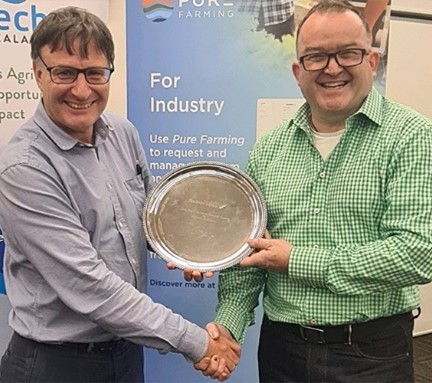Climate change is a global issue. And while priority actions and policies differ by country, sector and by individual businesses, developing a consistent approach to the key metrics by which we measure progress on the farm would be a major step forward, says Map of Ag’s Head of Sustainability, Hugh Martineau
Regenerative agriculture is the buzzword. And that’s good. The growing enthusiasm for the adoption of production processes on the farm that are much more environment and nature focused is the signal of an important cultural shift in the sector.
The principles of “regenerative farming” are not new. Indeed, it is testament to the work of the late Caroline Drummond at LEAF (Linking Environment & Farming) that so much change has already been accomplished – her loss leaves a big hole but happily an even bigger legacy. One of the challenges has been the need to quantify the impact of on-farm changes in practice and to use relevant measures to accelerate engagement across the sector. This will not only be good for UK agriculture’s brand but also support policy and legislation approaches that balance economic, social and environmental considerations.
This requires a common approach to measurement and collection of data, and its interpretation. And we need to do this in a way that brings farmers along a journey, not to a cliff edge. In other words, like a plant, start small, and grow.
Government Influence
It has been 30 years since the McSharry reforms of the Common Agricultural Policy which started the process of evolving support schemes in agriculture from rewarding outright production to incentivising more environmentally friendly approaches. And with the UK’s departure from the EU, we will see a transformation in agricultural support towards ‘public money for public goods’.
The Sustainable Farming Incentive is one of the first cabs off the rank and focuses on meeting a 25-year Environment Plan, Net Zero and animal health & welfare ambitions. The scheme will pay farmers to produce public goods such as water quality, biodiversity, animal health & welfare, and climate change mitigation, alongside food production.
But there remains a conspicuous gap in policy that incentivises farmers to collect and share data that will help evidence progress in meeting environmental outcomes, support activities such as R&D and importantly, informing consumers of the high production standards and benefits. Why is this when we know good data has the potential to unlock so much benefit?
Perhaps it is the concern over how data will be used, and by whom. Could it be the lack of skill and capability in collection and interpretation of the data? Or is it that this all feels a bit big to chew?
Likely it is all three; but we must start somewhere. Developing a framework for some manageable data collection towards a limited but relevant set of standardised metrics and KPIs – most likely focused around Net Zero – would be a terrific start.
Presently, there is little consistency in approach, and less still engagement in collecting the right data. Not to incentivise this is a missed opportunity, not only for farmers but also processors, retailers, and the financial sector, all of whom are under pressure to meet environmental targets.
To make progress is not necessarily as hard as it seems. The work we have been doing with the agrifood supply chain has demonstrated that even limited amounts (and sources) of data can yield valuable insights. We have been developing dashboards for farmers and the organisations they supply that show how farms compare with benchmark and, importantly, where the best opportunities for improvement lie.
“The irony is that in most cases, lowering the carbon footprint of the farm usually goes hand in hand with improved efficiency…and profits.” Explains Hugh, stating that of itself should be an incentive, particularly in these inflation-charged times.
Technology – our Pure Farming data integration platform for example – plays a vital role in this, allowing data to be sourced, standardised and permissioned (by the farmer) for relevant and multiple uses.
Bringing a manageable set of data about each farm together can, allow not only an assessment of the farm’s current status (baseline), but also a calculation of the theoretical minimum carbon footprint the farm could achieve. With some standardisation in approaches (building on what already exists), this could become one of the most important metrics of all, around which a useful suite of KPIs can be built.
It’s exactly the approach we are taking, and in communicating in these terms, our experience with farmers is that they like it because it is not too onerous, it is easy to understand, and it helps them be more objective about where they should be heading – particularly when it comes to emerging opportunities such as carbon trading.
It’s time to get this moving and data lies at the heart of this. The approach needs consensus and realism. But it also needs incentivising now, before we get too close to that cliff edge.


